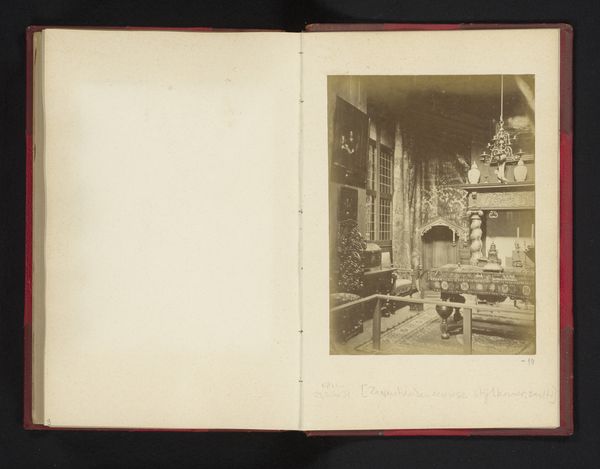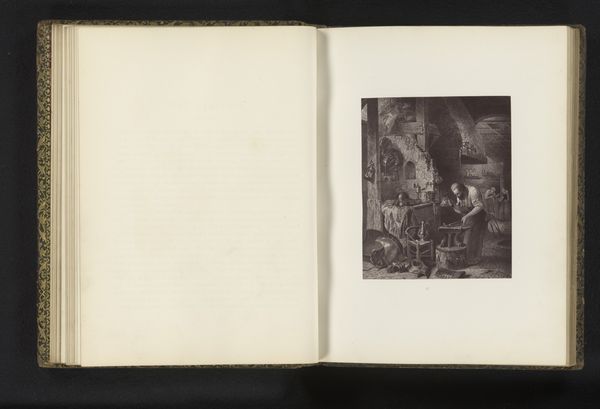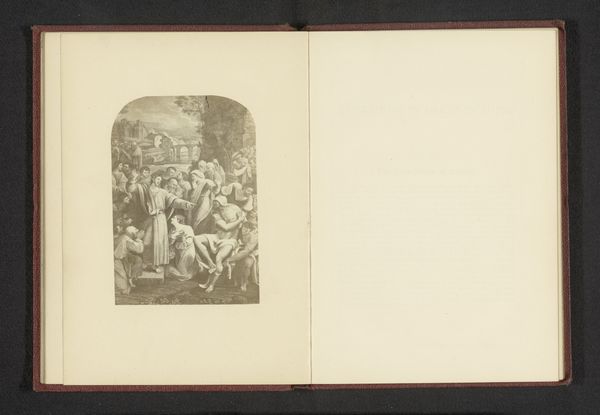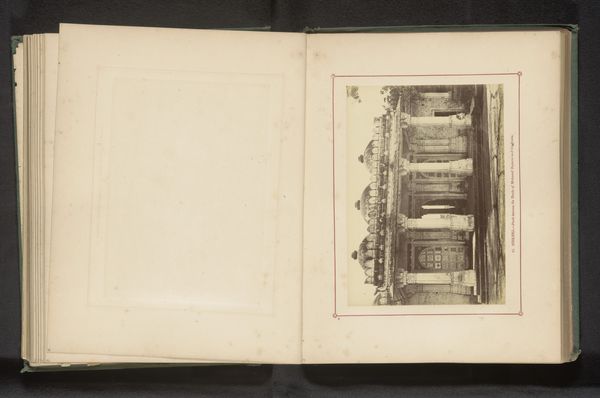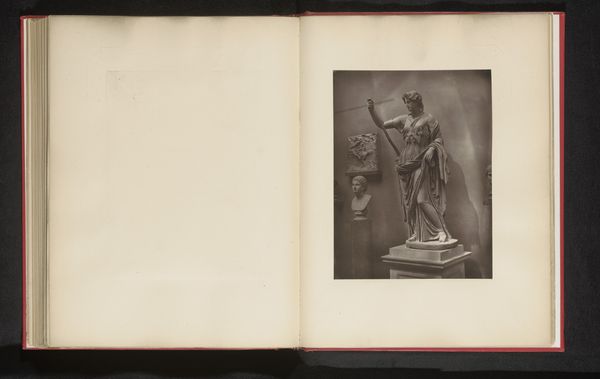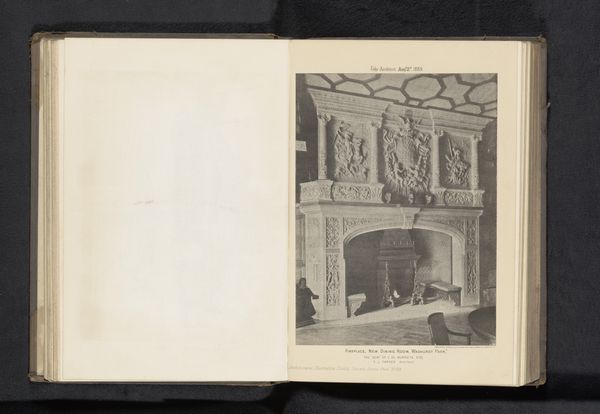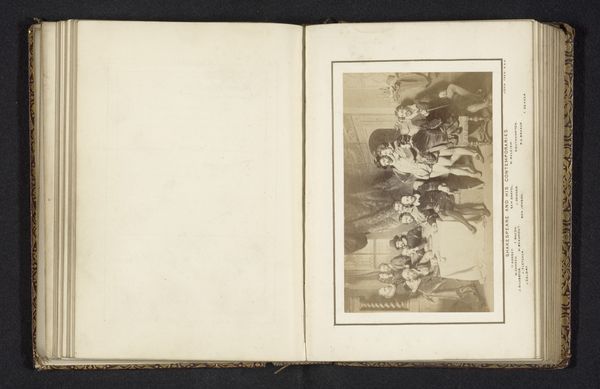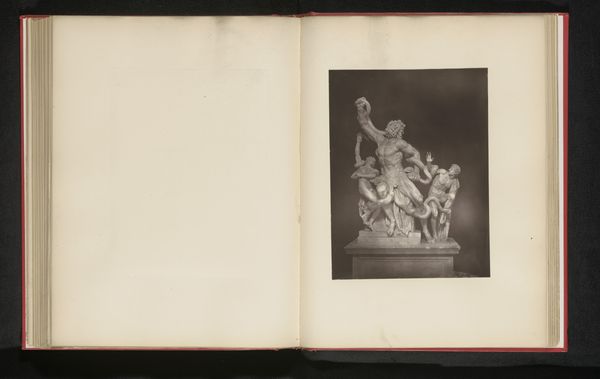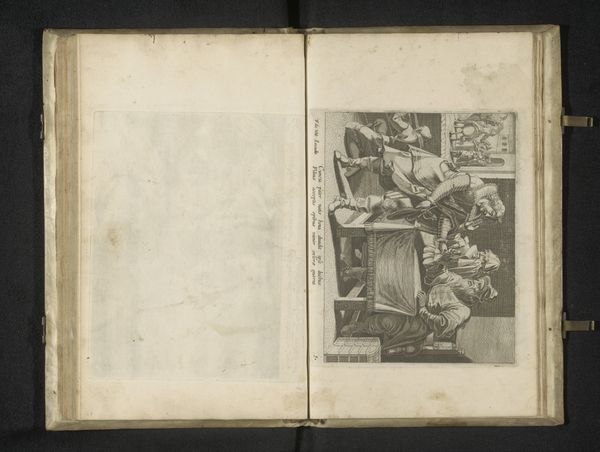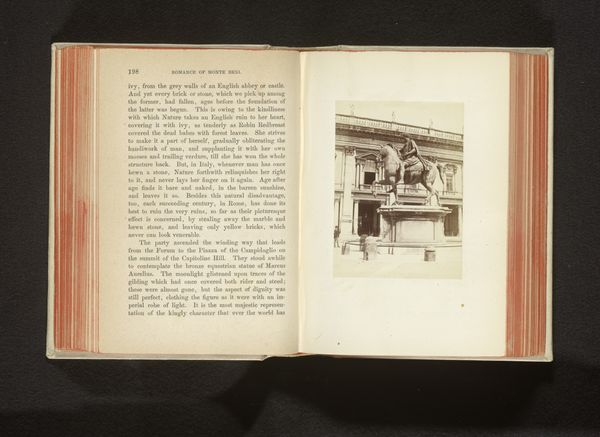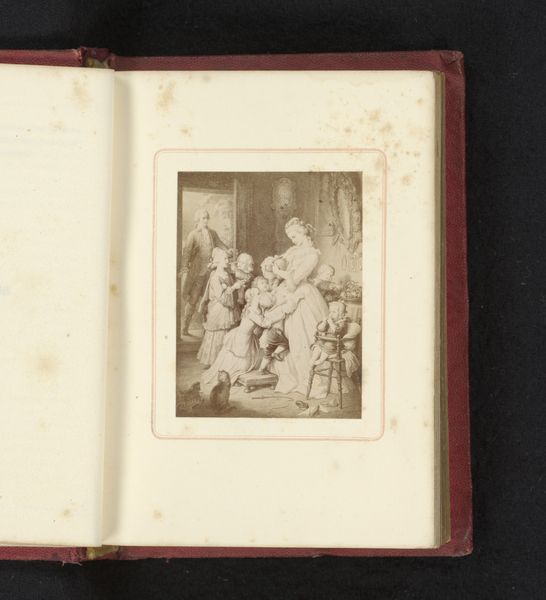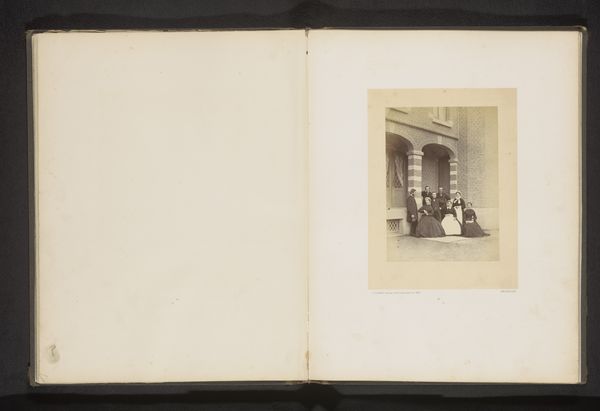
print, photography, sculpture, gelatin-silver-print
#
portrait
#
allegory
# print
#
greek-and-roman-art
#
photography
#
sculpture
#
gelatin-silver-print
Dimensions: height 205 mm, width 157 mm
Copyright: Rijks Museum: Open Domain
Editor: So, here we have a gelatin silver print dating back to before 1878, titled "Standbeeld van de personificatie van de Nijl" – or, "Statue of the Personification of the Nile." It depicts a sculptural installation. It seems imposing and grand. What are your initial thoughts on this, particularly in the context of its historical setting? Curator: It's interesting to see a photograph of a sculpture, rather than the sculpture itself, isn't it? It speaks to the rise of photography in the 19th century and how it was used to disseminate and document artwork, influencing public perception. Consider how this image might have shaped views of Egyptian culture and the Nile itself within a European context. What impact does reproducing sculpture as a photograph have? Editor: That's a fascinating point! I hadn't considered the photograph as a form of interpretation in itself. The composition reminds me a bit of classical Roman art. What connection do you see between this piece, the institution displaying it, and larger cultural trends of the time? Curator: Precisely. This artwork invokes the power of empires and control of key resources. This sculpture and the photographic print exemplify the 19th-century European fascination with Egypt. It also showcases how museums then, and to a degree even today, frame non-European cultures. The statue serves as a kind of trophy, embodying both knowledge and power over the Nile. The photograph made that power and knowledge more broadly accessible and consumed. Does that help shift your perspective on the print's significance? Editor: Absolutely. I see now that the artwork isn’t just an aesthetic object; it's deeply embedded in social, cultural, and political narratives. Thank you! Curator: And thank you. Analyzing it from a historical perspective makes it relevant to modern conversations around representation.
Comments
No comments
Be the first to comment and join the conversation on the ultimate creative platform.
